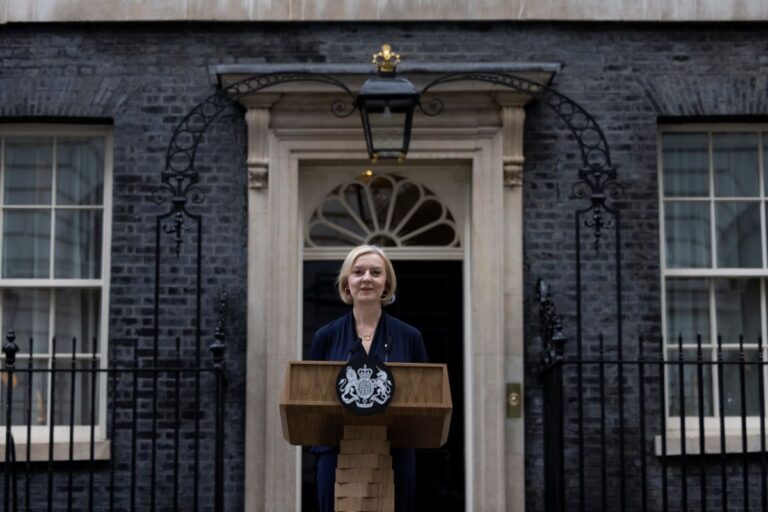Truss term in office was the shortest ever in UK government history. After only 44 days in Downing Street, Liz Truss resigned as British Prime Minister. In a ninety seconds statement, she communicated to the nation that she is no longer able to “carry on her mandate.”
Let’s analyse the reasons for the resignation, the profile of the (former) British PM and the possible successors.
Table of Contents
Liz Truss, why she resigned after only 44 days as Prime Minister
Liz Truss has officially announced her resignation as Prime Minister. The decision, now seen as inevitable by many observers and members of the Conservative Party itself, came after weeks of chaos due to the controversial tax reform announced by Truss.
And the trouble started as soon as the public mourning period ended, with the solemn funerals of Queen Elizabeth II that had united the country.
The disaster began with the ultra-Conservative mini-budget of September 23, with tax cuts for the wealthiest. This caused the pound to plummet. On October 3, Truss was forced to rescind it. Then, on October 14, in the face of obvious failure, the Chancellor of the Exchequer Kwasi Kwarteng, her close ally, had to resign.
Soon after, on October 19, the head of Home Affairs Suella Braveman fell as well. The day after, it was Truss turn to resign. This, leaving the Conservative Party, which had sacrificed Prime Minister Boris Johnson a few months ago, in chaos.
Liz Truss profile and political career
Truss succeeded Boris Johnson at Downing Street, who was also engulfed in scandals. But the skeletons in the former British PM’s wardrobe immediately surfaced. From her left-wing past, to criticism of the royals made in her youth, to an alleged extramarital affair dating back 16 years.
Born 47 years ago in Oxford, Liz Truss entered Parliament in 2010. Since then she has been climbing the ranks of the party she joined in 1998. On September 5 she was elected leader of the Conservatives, succeeding Boris Johnson in both party and country leadership.
Truss has held various leading roles in the British government since 2012, from Under Secretary of State for Education to Minister for the Environment and then for Justice. In September 2021, she took over as Foreign Secretary after the controversy surrounding Dominic Raab’s handling of the crisis in Afghanistan.
The leftist and anti-monarchist past
Truss has been quite open about her left-wing background, revealing how she participated in the campaign marches for nuclear disarmament. As a girl she demonstrated shouting ‘Maggie, Maggie, out, out‘, while as an adult she lectured at the Tory convention that Margaret Thatcher is now her political idol.
In a speech he gave when he was 19, Truss supported the abolition of the monarchy. The ex-PM however, who was at that moment the leader of the Oxford University Liberal Democrats, recently said she understood later on that the Queen and other royals are ‘key’ to the UK’s success.
The possible successors
For the post-Truss era, the Conservatives are once again called to choose another leader.
It is still unclear who will replace Liz Truss. In her speech, the PM said that her successor will be chosen from the ranks of the Conservative party, ‘within a week’. The leader of the majority party in the United Kingdom automatically becomes the Prime Minister.
In the front line is clearly Rishi Sunak, Boris Johnson’s former Chancellor of the Exchequer, who was defeated by Liz Truss in the party leadership race.
Among the other names are also those of Penny Mordaunt and the current Chancellor of the Exchequer, Jeremy Hunt.
On the other side, Labour leader Keir Starmer is calling for an immediate return to the polls.












